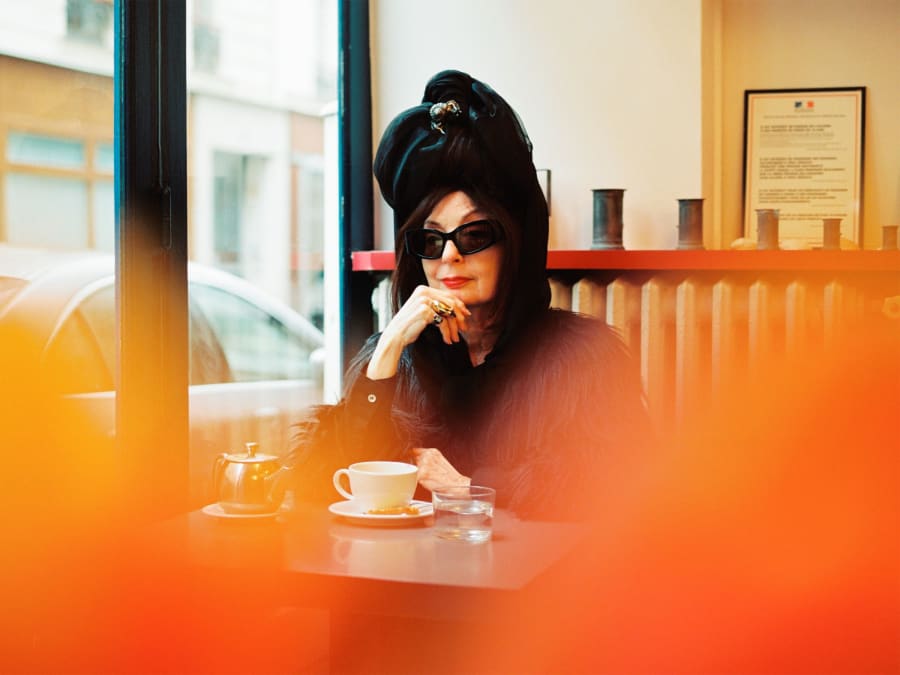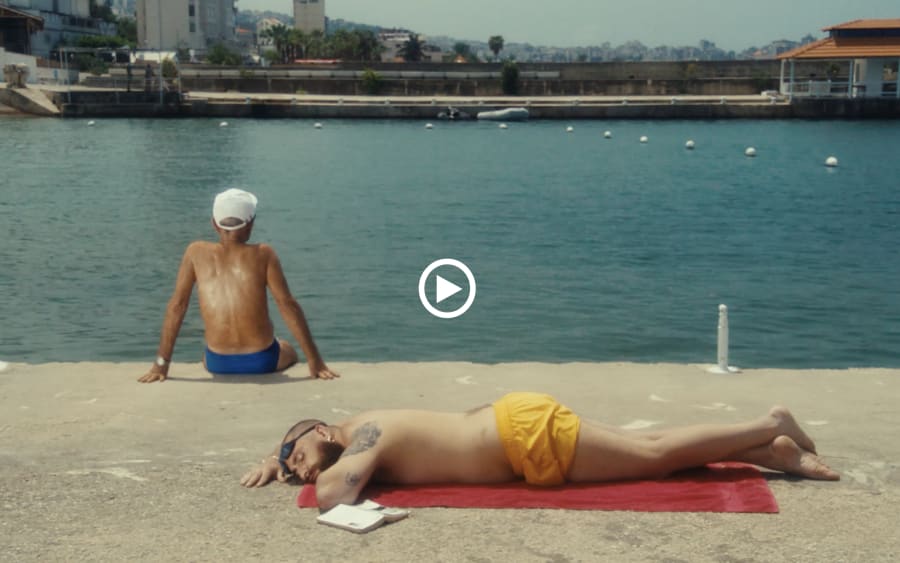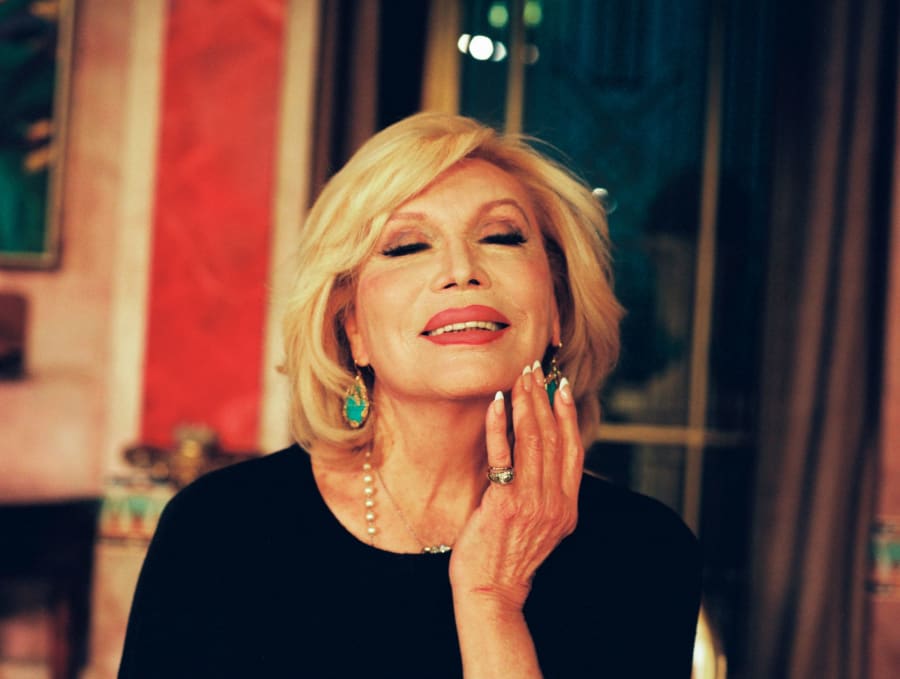Their sparkle persists, even in absentia. For centuries, the cabarets of Paris have written their own history without much official support, drawing inspiration from revolutions, café-theaters, and music hall spectacles. But unlike their more mainstream cousins – think the Moulin Rouge or Crazy Horse – these establishments wear their outsider status like a badge of honor, serving as sanctuaries for those pushed to the margins and dissidents of all varieties. Since the 2015 revival of the Madame Arthur cabaret in the capital’s Pigalle neighborhood, they’ve been proliferating across the city’s nightscape like rhinestone-encrusted wildflowers. Their names read like a manifesto of defiance: Cabaret de poussière (Dust Cabaret), La Barbichette (Little Beard), La Bouche (The Mouth), Le Cirque Électrique (Electric Circus), Maison De La (House of), Venus Noire (Black Venus), Cabaret Bad Biches, Le Shit Show!, Le Cabaraï, Le Cabaret des Merveilles (The Cabaret of Marvels), Victor Victoria, La K7 – and they’re determined to keep ruffling feathers. This January, when the French Ministry of Culture announced a nearly 500,000-euro package to support their activities, it marked an unprecedented shift. But in the world of cabaret, official recognition brings its own set of questions: What happens after the government extends its hand?
Expert Annabel Poincheval calls them ‘beyond categorization,’ capturing the elusive nature of these underground cabarets that drift between artistic practices, cheerfully ignoring traditional classifications. Whether they come from drag, theater, music, dance, circus, nightlife, burlesque, or contemporary art – sometimes even from education or business – cabaret artists have mastered the art of reinvention. They execute what La Bouche co-founder Mascare calls ‘deliberate detours’ and ‘sidesteps.’ Most are self-taught, taking classes when necessary, united by their desire to raise their voices and spread joy, shining in unparalleled performances that walk the line between camp and poetry, between trash and virtuosity, celebrating collective laughter, joyful debauchery, and venomous verse.
Those whom Jean-Marie Rivière (1926–1996), founder of the legendary Alcazar, dubbed ‘creatures’ have elevated self-deprecation and stigma reversal to an art form. They prefer to call themselves TPG (Trans Pédé Gouine [Trans Fag Dyke]) or Queer rather than using LGBT, which many consider too sanitized. Corrine (Sébastien Vion), a former bathroom attendant turned raucous matron, clown-shoed DJ, and revue leader has transformed her sharp tongue into a weapon of mass subversion. With the air of an uncouth housewife, ‘disturbed or degendered’ as she puts it, she’s spent thirty years pushing boundaries with her fierce verbiage, ‘penetrating spaces to create a bit of chaos,’ and preferring to step outside her comfort zone to appear where least expected: community halls, Christmas window displays, and children’s parties. Operating on instinct, she belongs to those who fear nothing, inspiring both admiration and discomfort in equal measure.
In cabaret, performers confide, emote, whistle, and skewer current events, without fear of shocking the bourgeoisie. Following the pure tradition of Karl Valentin (1882–1948) and Kurt Weill (1900–1950) – both cabaret geniuses known for their musical acts and satirical spirit – they share their daily struggles (money, love, work...) and purge their traumas, weaving personal narratives with activist discourse. The stage becomes their chosen platform to denounce the mutilation of intersex individuals, police brutality, discrimination, and injustices of all kinds. The self-proclaimed anarchist Cabaret de poussière doesn’t hesitate to commemorate the 19th-century revolutionary government known as the Paris Commune, while Madame Arthur proclaims a ‘free Lesbianistan,’ calling for lesbian emancipation. La Barbichette’s creator, Monsieur K (Jérôme Marin), sees cabaret primarily as ‘intelligent entertainment’: critical and engaged with its times.
Among cabaret artists, ambiguity is already a genre in itself, even as they deconstruct all forms of categorization, stereotypes, and hierarchies. Mascare speaks of ‘living archives’ and ‘poetic extensions of existence’ to describe how they tackle class and decolonial issues head-on. At La Bouche, each performer speaks from their own personal standpoint – whether as a displaced person, an Afro-descendant, working class, or from a Harki family – to better amplify collective memories. When drag performer Soa de Muse sings in Creole or creates an Afrofuturist cabaret with her sisters Shei Tan and Mami Watta, they give voice to all those fighting the same fight. The political power of cabaret lies in its ability to empower the oppressed, exemplified by the bearded women and drag performers who received standing ovations inside while facing death threats outside. Cabarets inherently welcome all differences, from atypical bodies to precarious populations. That’s the ideal, at least – though Martin Dust notes that since cabaret reflects society, ‘we must constantly guard against reproducing its biases.’ He points out that in terms of audience diversity and gender parity in leadership, they don’t always hit the mark. Artist self-management emerges as a potential safeguard for their inclusivity – or perhaps more accurately, a protective measure.
Will the ‘cabaret plan’ announced by the ministry of Culture change the game? The culmination of a ministerial study conducted in consultation with the Ekhoscènes network officially recognizes cabarets as creative spaces eligible for specific subsidies and validates their culture and heritage. While the report provides both precise and valuable insights, and while creative grants (or ‘creature grants’, as they’re known in the scene) and support for cabaret owners are far from useless – helping to support production and make ticket prices more accessible – we’re still far from institutionalization. And thankfully so, according to the whisperings backstage.
These establishments need no official stamp of approval, though collaborations with cultural institutions like the Centre national de la danse, Centre Pompidou, Théâtre du Rond-Point, Chaillot – Théâtre national de la Danse, and Palais de Tokyo, all in Paris; Les Célestins, Lyon; or Mucem in Marseille are becoming more frequent and often prove fruitful. While everyone remains clear-eyed about the risks of tokenization and the commodification of popular arts, institutions find in cabarets an opportunity to broaden their audiences and shake up their habits. In turn, cabaret artists see these partnerships as opportunities to challenge institutions, particularly regarding their lack of diversity, and to reinvent themselves beyond the underground scene. Although cabaret primarily designates a physical space, ‘one can,’ as Martin Dust reminds us, ‘bring it to life anywhere – on a sidewalk, in a club, a squat, or a museum.’
What remains urgent, as highlighted again by the ministerial mission, is the need to consider the preservation of knowledge and legacy, since the archives, scattered between public and private collections, largely depend on living memories. Beyond nationally and internationally celebrated performers such as Josephine Baker, Patachou, and Line Renaud, who will remember Yvette Guilbert, Marianne Oswald, and Marie Dubas? What will remain of Bambi, Brenda Mour, Monsieur Katia, or Madame H? Such is the fragile destiny of an underground culture that, being either too fleeting or too intimate, risks falling into oblivion. Fortunately, free spirits, scholars, and passionate individuals like Monsieur K and Martin Dust help keep the story alive. Like this article, the cabaret scene owes them a debt of gratitude. After all, a cabaret plan doesn’t quite cover everything.
Florian Gaité is a philosopher, lecturer at ESAAix (École Supérieure d'Art d'Aix-en-Provence), researcher (ACTE - Arts, Créations, Théories, Esthétiques, Paris 1 Panthéon-Sorbonne University) and art critic, member of AICA (Association Internationale des Critiques d'Art).
'Cabaret décadent, revue électrique : Vice' at Cirque Electrique (Paris 20th), shows from February 12 to March 29 (no shows March 5 and 6)
'Cabaret des Venus noires' at La Communale Saint-Ouen (Saint-Ouen-sur-Seine), show on February 14
Shit Show! at Sing or Die (Marseille 1st), special performance on February 12
Cabaret La Bouche (Paris 18th), shows on February 7, 12-13, March 5-7, 12-13
Cabaret de Poussière at Zèbre de Belleville (Paris 11th), shows from February 19 to 28
Cabaret La Barbichette at La Machine du Moulin Rouge (Paris 18th), shows on February 20-22, March 13-15
Header image: At Le Cabaret de Poussière, Paris, January 2025. Photography by Léon Prost for Art Basel.
English translation: Art Basel.
Published on February 4, 2025.


